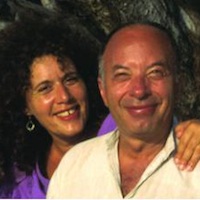Ed is a passionate and expert skier. When you sit for meditation and your mind drifts you can just bring it back to your practice and continue. But if you are skiing down a steep mountain and you lose concentration you could hit a tree. Ed teaches this, calling it inner skiing, where our perception is on the edge and we’re in tune both within and without. It is a dynamic and relaxing freedom – meditation in action.
To anyone first coming to meditation they can be met with a plethora of advice and techniques that is enough to baffle and confuse. Where to go? What to do? Which is best? How to start? How to chose between mindfulness, TM, mantra recitation, kundalini, vipassana, insight, witness, breath awareness, shamata, visualization, MBSR, metta, and more?
Part of the difficulty is that the word meditation means both the experience and the technique. This is important because the experience is spontaneous, natural, arising from within, while the technique is simply the learnt method that helps you have the experience. And it makes little difference which technique you use. When you drive to Rome you need a car but once you get there you don’t. The techniques are designed to help you calm the mind, to bring your attention inward, focused in just this present moment, so that the experience of meditation arises naturally.
We clarify this difference in our book,Be The Change, How Meditation Can Transform You and The World, as it is so easy to get caught up in the technique – mine is better than yours – and forget that it is only a way to something, it is not the something itself. We talked with over 100 meditation teachers and practitioners who all stressed that the experience is far more important than the technique used because what you are really doing is opening yourself to an inner stillness that grows each time you come to sit quietly with yourself. In other words, just shut up, sit still, and see what happens!
The experience of meditation is one of being completely and utterly present. That may sound so simple but it is rare – notice how your normal state of mind is distracted by issues from the past or dealing with issues in the future – anywhere but just right here! When we are fully present all those demanding thoughts begin to drop away, are seen as being far less important, even the anger, resentment, hurt and other negative emotions lose their power. Being fully present we experience the totality of our being and the richness found in stillness and silence.
So, when looking for a meditation technique, it may be worth trying them all. Each one will offer a slightly different take on the same thing, and we each need to find that one that suits us best. As one of Deb’s teachers said, there are as many forms of meditation as there are people who practice it.
Just watching the flow of the breath as it enters and leaves very naturally internalizes our attention and is more than enough for many people (mindfulness, breath awareness, shamata –see below). Others have the same affinity to repeating a mantra or sound as the repetition induces greater peace (TM, mantra meditation). We can also purposefully foster positive states of being, such as cultivating greater peace, kindness, and forgiveness, through the repetition of simple phrases or visualization.
However, meditation can appear very boring, especially to beginners. Just sitting and watching our mind can seem so absurd, especially when we are invariably confronted with an endlessly chattering mind: the dramas, fears and neurosis seem to have a picnic, pushing anything meaningful out of the way. It’s not that this chatter is new, just that we are now more aware of it, like an endless parade of senseless scenarios. When we were teaching meditation in England Ed was explaining how the mind can create havoc, and how some of the most inane thoughts can arise like: “I want to kill my mother!” The woman he was talking with blurted out, “How did you know?”
Practice
All you have to do is sit comfortably and watch your breathing. Just breathe naturally, in and out, no forced, short or long breathing. Simply watch each movement of breath. If this is hard, then you can also silently repeat, “breathing in, breathing out” with each breath.
Thoughts will come and go. You will probably find yourself getting distracted. The mind is very good at finding reasons not to be still, like a monkey bitten by a scorpion leaping from branch to branch it leaps from or drama to drama. When it does, just come back to watching your breath. The monkey will eventually get quiet and be still.
Make friends with meditation by not pushing yourself. Start with sitting for just 10 minutes a day until you naturally find yourself wanting and doing longer. That way you won’t resent it. Sit upright – a bent or slouchy back will bring your energy down.
And as the saying goes, practice makes perfect. Which means that meditation is accumulative – you may not experience anything the first time you do it, but keep at it and you will. And though it may appear as if nothing is happening, in the midst of it all you may have a breakthrough, a moment of insight, and that one moment can change your life.
Can you shut up and be still?
Buddha photoby Dolmang at Flickr.net
******
See our award-winning book: BE THE CHANGE, How Meditation Can Transform You and the World, forewords by the Dalai Lama and Robert Thurman, with contributors Jack Kornfield, Jane Fonda, Father Thomas Keating, Marianne Williamson, Ram Dass, and many others.
Our 3 meditation CD’s: Metta—Loving kindness and Forgiveness; Samadhi–Breath Awareness and Insight; and Yoga Nidra–Inner Conscious Relaxation, are available at: www.EdandDebShapiro.com








Read 0 comments and reply